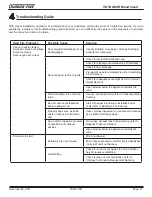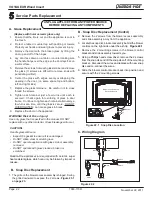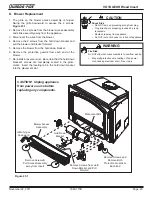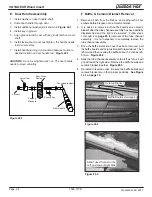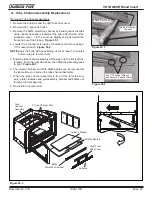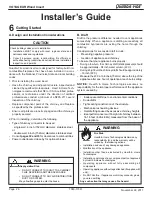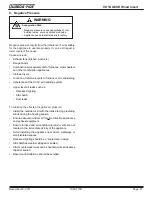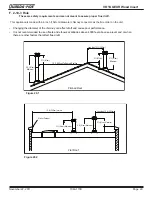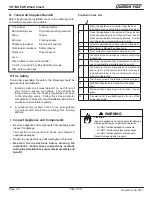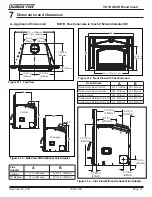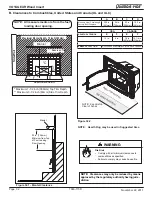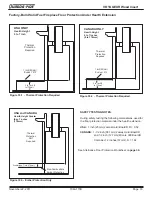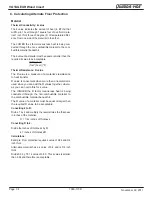
November 22, 2011
7063-173D
Page 35
VOYAGEUR Wood Insert
R
8
Chimney Systems
D. Masonry Chimney
• Must meet minimum standards of NFPA 211.
• Must have at least 5/8 inch (16mm) fi reclay lining joined
with refractory cement.
NOTE: Installations into a clay flue without a
stainless steel liner may reduce draw which affects
performance, will cause the glass to darken and
produce excessive creosote and create start-up
issues.
•
The masonry wall of the chimney, if brick or modular
block, must be a minimum of 4 inches (102mm) nominal
thickness.
•
A chimney of rubble stone must be at least 12 inches
(305mm) thick.
• Cross-sectional area shall conform to NFPA 211-2006
Section 12.4.5.1.
• Should be lined with a 6 inch (152mm) stainless steel
fl ue liner to improve performance and reduce creosote
build-up and diffi culty starting a fi re.
•
An equivalent liner must be a listed chimney liner system
or other approved material.
• No dilution air is allowed to enter the chimney.
1.
Secure the fi replace damper in the open position. If
this cannot be accomplished, it will be necessary to
remove the damper
2. Seal damper area of chimney around chimney
connector with a high temperature sealant or seal
insert against the face of the fi replace.
3. Both methods must be removable and replaceable
for cleaning and re-installation.
• When possible, install an airtight clean-out door to the
rear of the smoke shelf.
A. Venting Systems
Chimney Connector:
It is also known as fl ue pipe or stove pipe. It must be
6 inches (152mm) minimum diameter stainless steel
connector pipe.
Chimney
:
The chimney can be new or existing, masonry or
prefabricated and must meet the following minimum
requirements as specifi ed below.
WARNING! Risk of Fire!
Follow venting manufacturer’s clearances and
instructions when installing venting system.
B. Inspections
Existing chimneys should be inspected and cleaned by a
qualifi ed professional prior to installation. The chimney
must not have cracks, loose mortar or other signs of dete-
rioration and blockage. Hearth & Home recommends a
NFI or CSIA certifi ed professional or a technician, under
the direction of a certifi ed professional, conduct a Level II
inspection per NFPA 211.
Fire Risk
Inspection of Chimney:
• Chimney must be in good condition.
• Meets minimum standard of NFPA 211
• Factory-built chimney must be 6 inch
(152mm) UL103 HT.
WARNING
NOTICE:
Check with your local building authorities
and/or consult the National Fire Protection Association
(NFPA 211).
C. Larger Chimneys
Hearth & Home recommends that chimneys with larger
diameters than 6 inches (152mm) be fully relined. An over-
sized fl ue can affect draft and impair performance and will
allow increased build-up of creosote which is why a full reline
is stongly recommended.
NOTE:
Masonry chimneys are signifi cantly less than ideal
for venting solid fuel appliances. A masonry chimney is not
subject to any temperature limit test, therefore a full reline
is strongly recommended.

